A resume as a carpenter might not appear to be the most difficult of tasks, and it doesn’t need to be. When applying for a carpenter job, you will likely have to complete many different applications, often in quick succession. This means that you must keep your cool and present a brief and relevant resume each time. The types of roles you are applying for as a carpenter may differ, but they all require the same essential elements in your CV. Therefore, the success of your application is primarily down to how well you tailor your resume to each specific job role and industry standard. This article will provide insight into what hiring managers are looking for regarding resumes for carpenters and, more importantly, how you can stand out from the crowd with yours.
Carpenter Resume Example
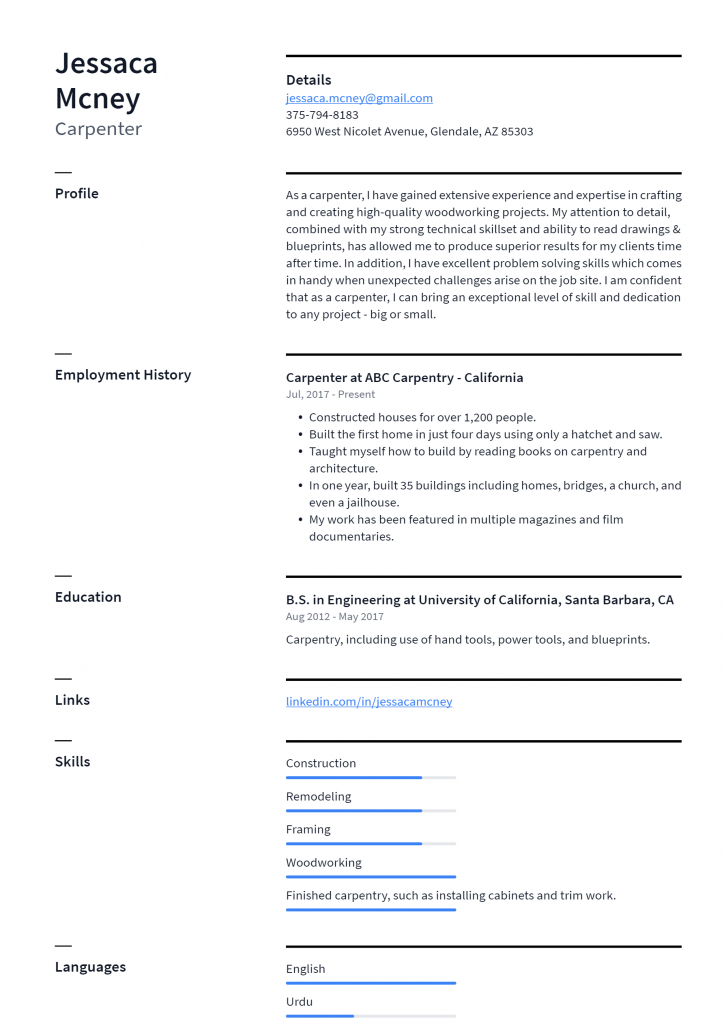
Download This Carpenter Resume as PDF
Construction Carpenter Resume Example
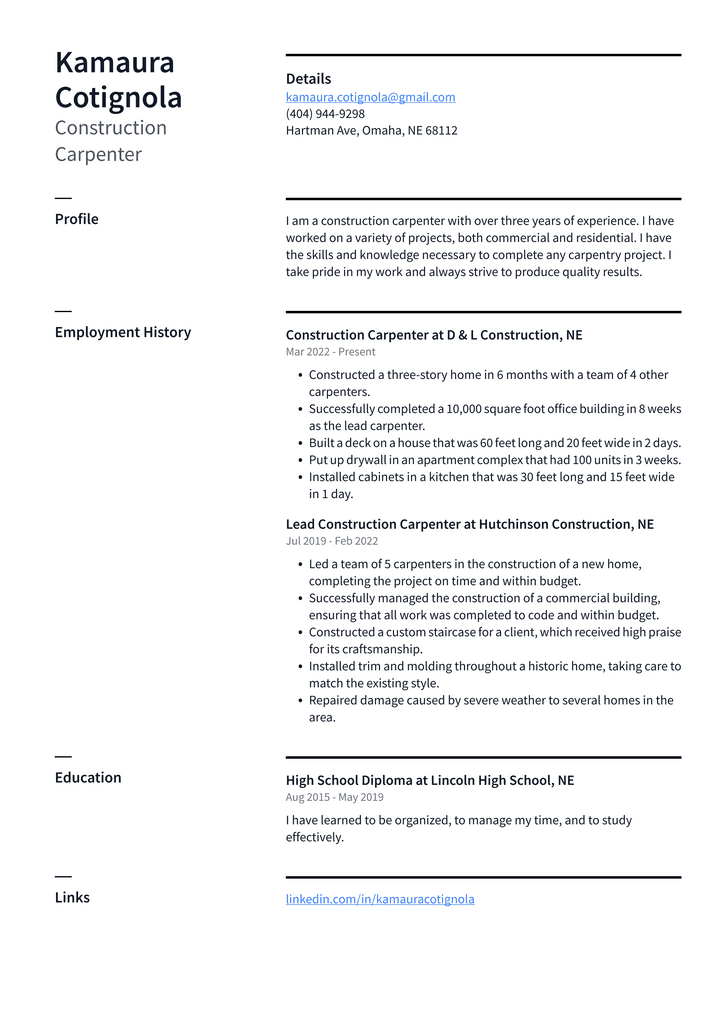
Download This Construction Carpenter Resume as PDF
Finish Carpenter Resume Example
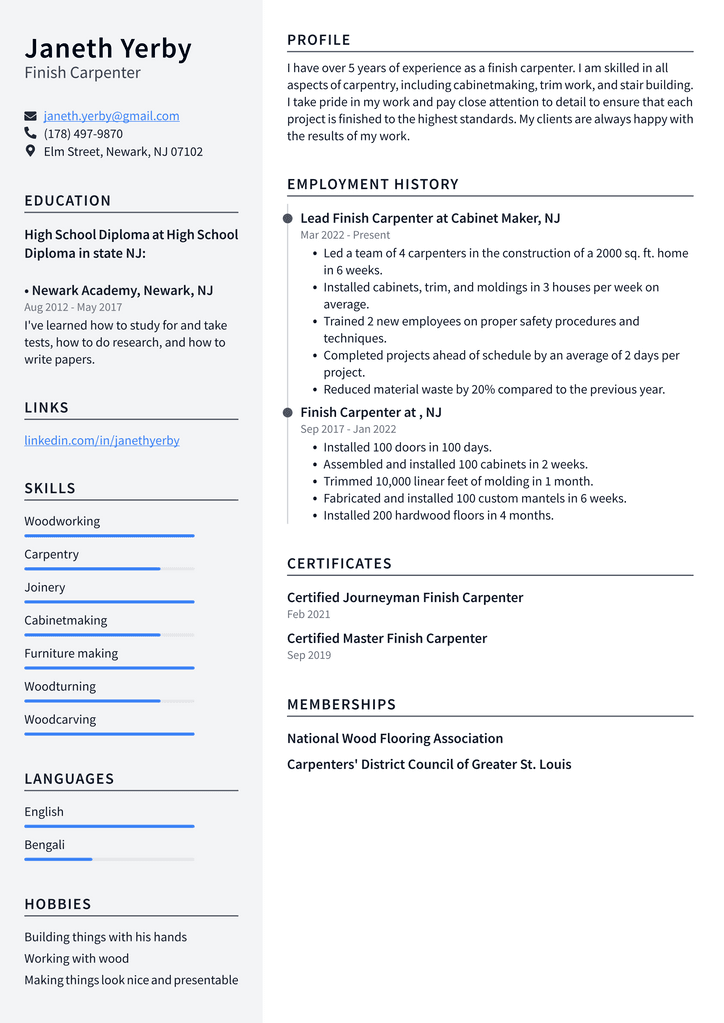
Download This Finish Carpenter Resume as PDF
Framing Carpenter Resume Example
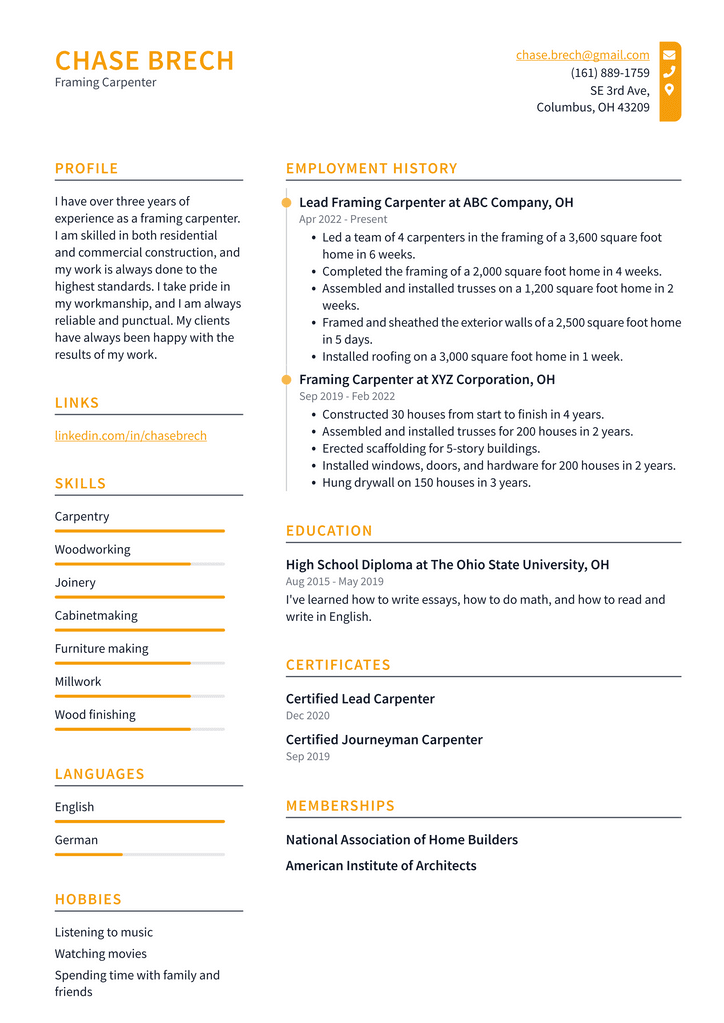
Download This Framing Carpenter Resume as PDF
Maintenance Carpenter Resume Example

Download This Maintenance Carpenter Resume as PDF
Carpenter’s Assistant Resume Example
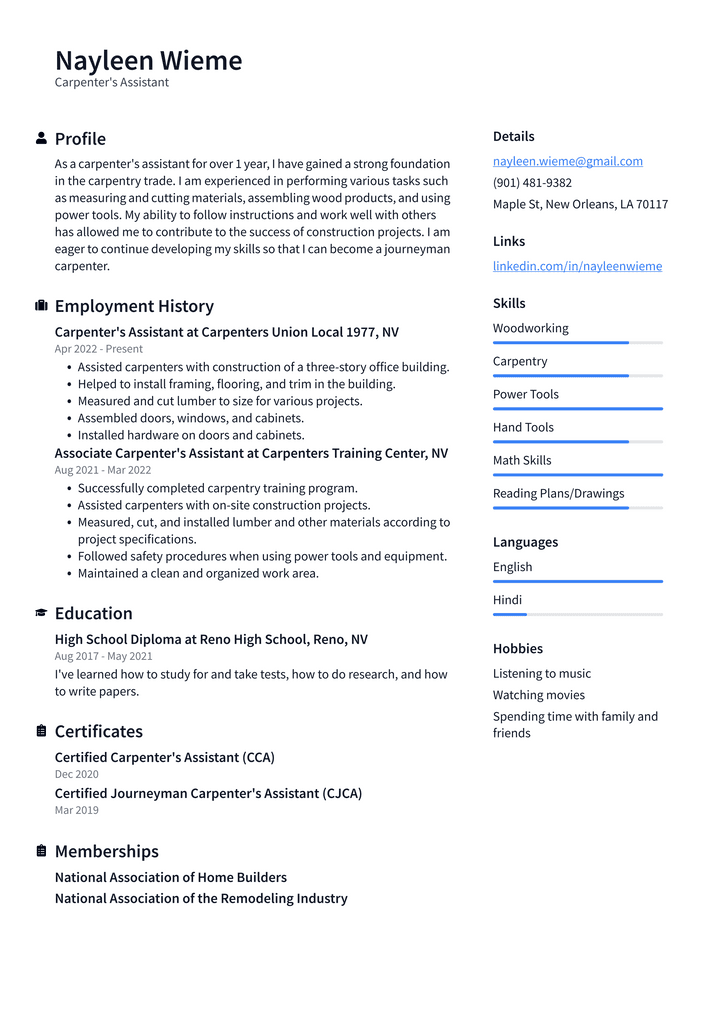
Download This Carpenter’s Assistant Resume as PDF
Journeyman Carpenter Resume Example
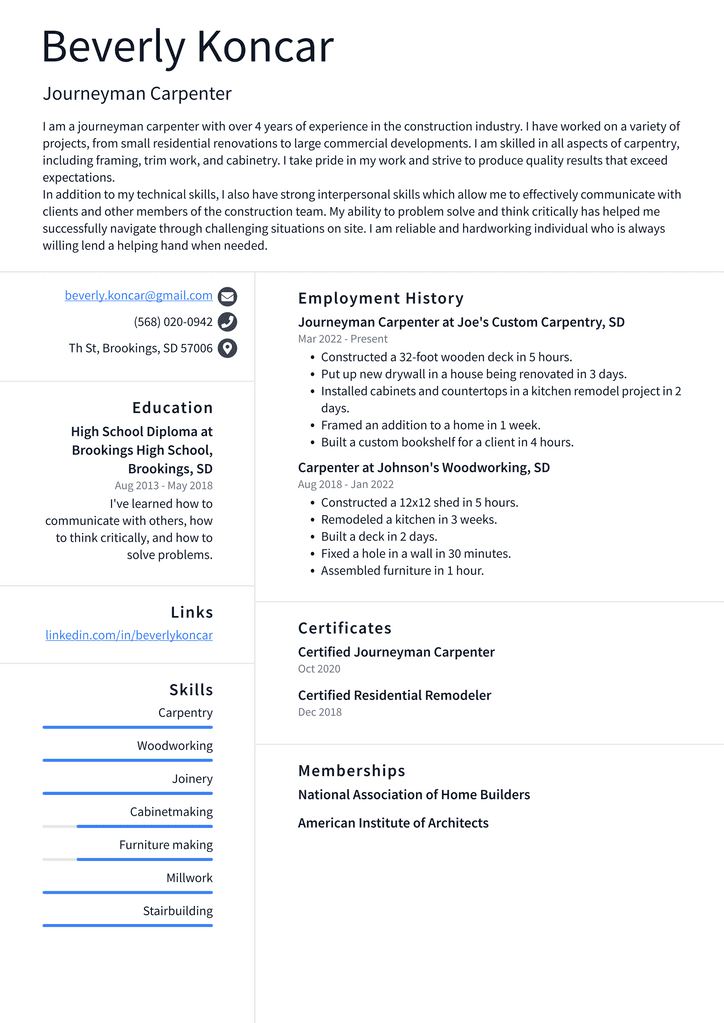
Download This Journeyman Carpenter Resume as PDF
The Basics of a Good Carpenter Resume
A resume is your chance to make an excellent first impression on any potential employer. This is especially important in a field like carpentry, where the demand for work and the supply of skilled workers is low. With this in mind, ensuring that your resume is well-written and easy to read is crucial. A good resume should be concise, with all relevant information on one page. Furthermore, this information should be easy to read and understand, with no jargon or complicated sentences. Finally, your resume should highlight your skills, qualifications, and relevant experience to the job you are applying for.
Keywords and Synonyms
Keywords are words placed within your resume that will make it easier for employers to find you. They are often related to the job you are applying for and the industry you are working in. When applying for jobs as a carpenter, you must use these keywords correctly. This will help increase the chances of your resume being found by the employers and selected from the list of applicants. One way that you can do this is by using synonyms for the words. This means substituting one word for another that has a similar meaning. For example, you might use the word ‘woodworking’ instead of ‘carpentry.’ While these terms are used to describe this type of work, they are less specific and may appear on more job listings. Again, this can increase your chances of being found by employers.
Summary of Qualifications
This section of your resume acts as a summary of your key strengths and qualifications that are relevant to the job you are applying for. It is an opportunity for you to highlight any experience that is particularly relevant to the job you are applying for. As with your keywords, selecting skills and experiences relevant to the job you are applying for is essential. This will make it easier for the employers to see how you could contribute to the company.
Employment History
This section of your resume should be written chronologically, detailing all of your previous work histories. It is vital that you do not lie about your work history and are honest about the type of work you have been doing. It is also crucial to not just list the different jobs you have held over the years. Instead, it would be best if you also detailed how long you held each position, your role, and your achievements while there. This will help the employers understand what skills and experience you have gained from your previous work.
Skills Section
Throughout your resume, you will have highlighted your relevant skills and experience that apply to the job you are applying for. You must include an applicable skills section at the end of your resume to summarize these. A skills section is often used by applicants who have gaps in their work history, have changed industries, or have little or no work experience. It is an excellent way to summarize your critical skills and give the employer an overview of your abilities.
Conclusion
The conclusion of your resume should be a summary of your key strengths and essential qualifications relevant to the job you are applying for. It is an opportunity for you to summarize the critical points of your resume and restate why you are the best applicant for the job. A conclusion will help tie all of your resume’s different sections together. This is particularly important if you have a large amount of experience or have an extensive education background. When writing your conclusion, it is crucial to be concise and stick to the point. This will make your resume easier to read and allow the hiring manager to conclude your resume. Ultimately, your resume is your chance to sell yourself to employers and show them why you are the best candidate for the job. When applying for jobs, it is essential to tailor your resume for each specific position. This means that you must research the company, review the job description and decide which sections of your resume to highlight and what areas to omit.